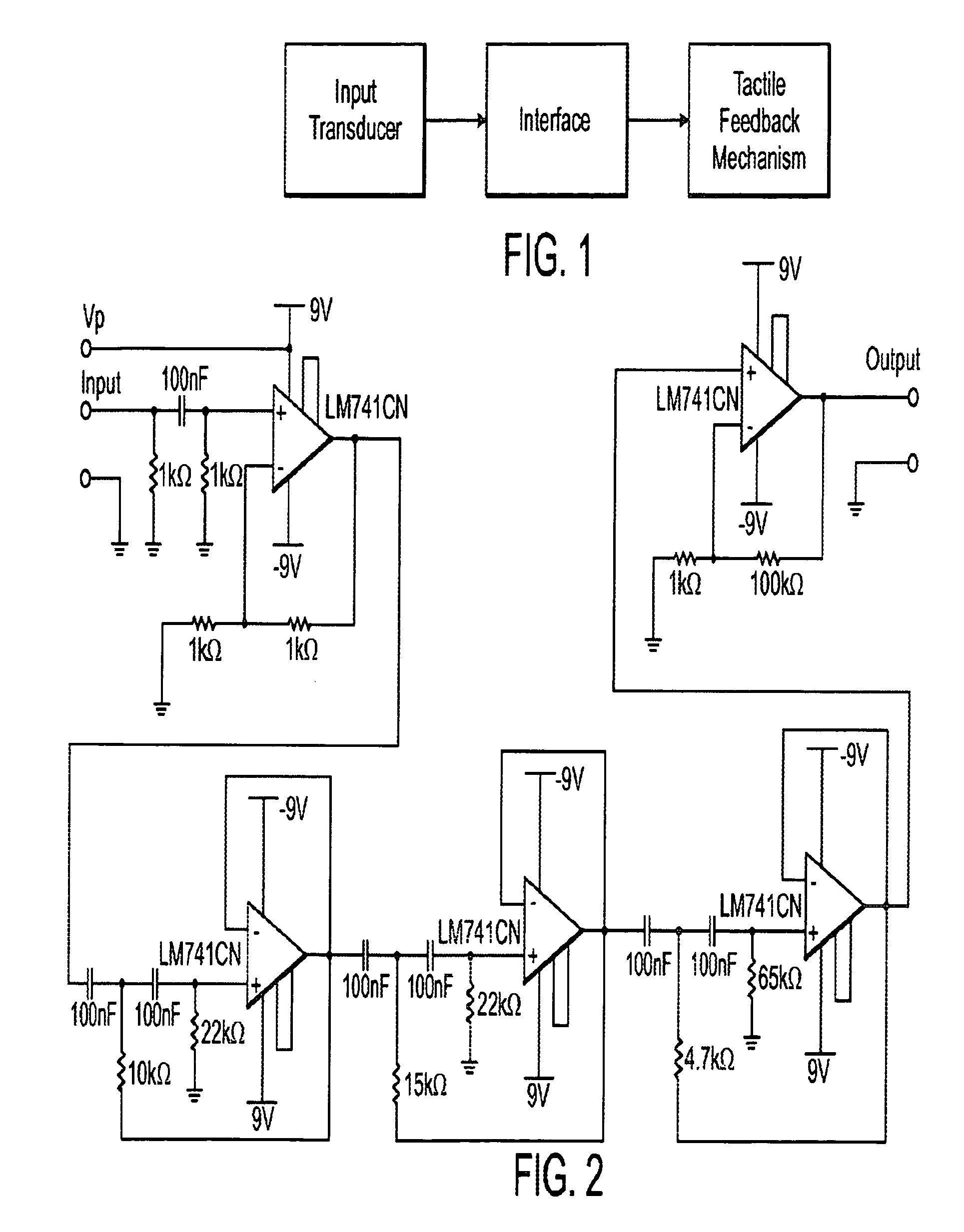Stuttering inhibition method and device
a technology of stuttering inhibition and inhibition device, applied in the field of controlling and reducing stuttering, can solve the problems of limited treatment of stuttering, no valid cure, limited amount of control over stuttering speech, etc., and achieve the effect of reducing stuttering
- Summary
- Abstract
- Description
- Claims
- Application Information
AI Technical Summary
Benefits of technology
Problems solved by technology
Method used
Image
Examples
working examples
[0029]Two embodiments of the claimed device are described below to enable a person skilled in the art to make and use the invention. The two embodiments share the same power supply and vibrating mechanism for providing tactile feedback.
[0030]Any power source for the device may be used in implementing the device, including AC or DC power. For the two embodiments, the main power source is a combination of two 9V batteries. The use of batteries allows for a stable source of steady current from a mobile source. Although the input devices of our embodiments (microphone and accelerometer) only require positive voltages, our operational amplifiers required negative voltage supplies. For this, a voltage divider circuit was used. This circuit uses two 9V batteries in series and divides the total of 18 volts into equal halves with the help of two equal, large-valued resistors. Connecting the ground of the circuit between the two resistors will result in the negative voltage relative to the gr...
working example
Embodiment 2
[0054]A complete schematic of the second embodiment can be viewed in FIG. 3. The components of the second embodiment are individually introduced and explained in the following paragraphs.
[0055]The second design uses an electret condenser microphone to produce the input signal. The microphone is essentially a capacitor with one fixed plate. The position of the other plate of the capacitor varies depending on the pressure of the sound waves coming into contact with it. Capacitance varies according to the change in distance between the two plates. The charge on the plates is nearly constant; therefore, the voltage across the capacitor must also vary with respect to the pressure waves. It is this voltage that is the output of the microphone. A capacitor is used to block the DC bias voltage from the output. The bias resistor that connects the microphone's positive lead to the source voltage is 10 kΩ as specified by the manufacturer's data sheet for the microphone. This value ...
PUM
 Login to View More
Login to View More Abstract
Description
Claims
Application Information
 Login to View More
Login to View More - R&D Engineer
- R&D Manager
- IP Professional
- Industry Leading Data Capabilities
- Powerful AI technology
- Patent DNA Extraction
Browse by: Latest US Patents, China's latest patents, Technical Efficacy Thesaurus, Application Domain, Technology Topic, Popular Technical Reports.
© 2024 PatSnap. All rights reserved.Legal|Privacy policy|Modern Slavery Act Transparency Statement|Sitemap|About US| Contact US: help@patsnap.com










